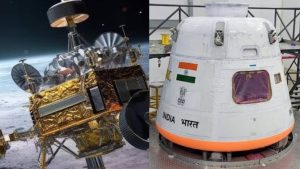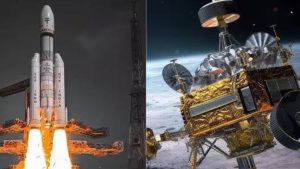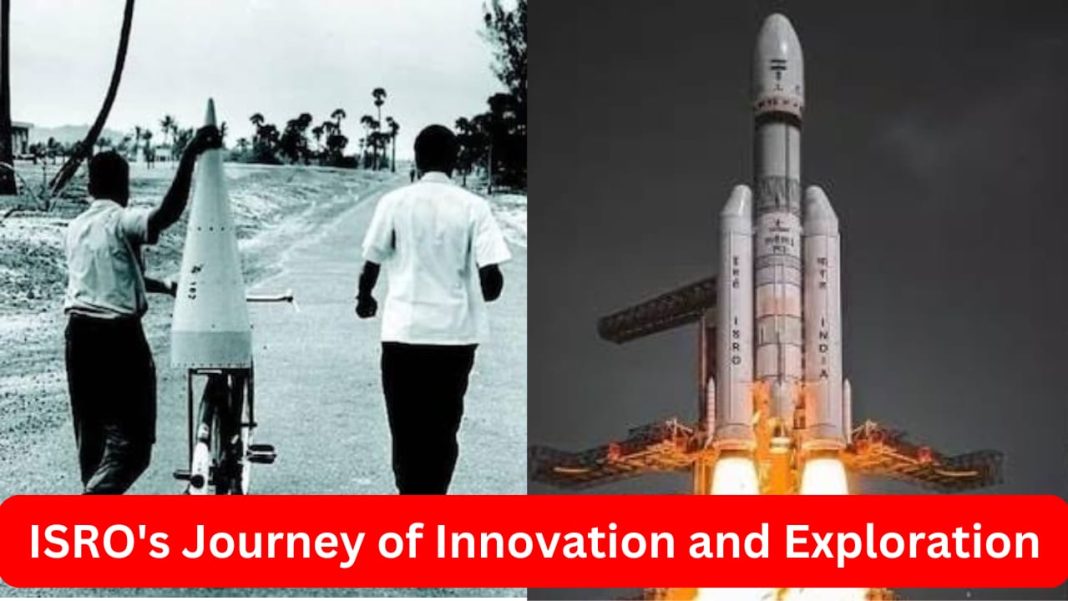Digital News Desk:
India’s space agency, the Indian Space Research Organisation (ISRO), stands as a testament to ingenuity, resilience, and the spirit of scientific exploration. Founded in 1969, ISRO began its journey with limited resources but ambitious goals, growing from launching small satellites to achieving complex missions that capture international acclaim. ISRO’s achievements—from launching the Chandrayaan and Mangalyaan missions to its upcoming Gaganyaan human spaceflight—highlight the organization’s evolution and significant contributions to both national development and the global space community.
Beginnings of ISRO: Humble Roots with Grand Ambitions
ISRO’s inception traces back to the vision of Dr. Vikram Sarabhai, who is regarded as the father of the Indian space program. Dr. Sarabhai believed that space technology could play a crucial role in addressing India’s socio-economic issues and serve as a bridge to bring education, communication, and resources to even the most remote regions of the country. The government of India established ISRO in 1969, with the organization working initially out of a small church in Thumba, Kerala. Here, scientists conducted early experiments with rocket technology, learning foundational skills for future endeavors.
In 1975, ISRO launched its first satellite, Aryabhata, marking India’s entry into the space age. Aryabhata was launched through Soviet assistance, setting a precedent for international collaboration that continues to be a cornerstone of ISRO’s approach. By demonstrating their capability to develop and operate satellites, ISRO laid the groundwork for building its own launch vehicles and advancing satellite technology.

Development of Indigenous Launch Vehicles
To achieve self-reliance in satellite launches, ISRO embarked on developing its own launch vehicles, leading to the creation of the Satellite Launch Vehicle (SLV). In 1980, India’s first indigenous launch vehicle, SLV-3, successfully placed the Rohini satellite into orbit, demonstrating ISRO’s ability to develop and execute independent satellite launch missions. This milestone was a crucial step in building indigenous capabilities in rocket science and placed India among a select group of countries with launch vehicle capabilities.
Building on SLV-3’s success, ISRO focused on developing more advanced launch vehicles, such as the Augmented Satellite Launch Vehicle (ASLV) and the Polar Satellite Launch Vehicle (PSLV). The PSLV became one of ISRO’s most reliable workhorses, famed for its accuracy and versatility in launching satellites into various orbits. It also showcased ISRO’s unique ability to conduct cost-effective launches, attracting international clients and making PSLV one of the most commercially viable launch vehicles globally.
Expanding Horizons: Chandrayaan and Mangalyaan
A significant leap in ISRO’s journey was the Chandrayaan-1 mission, launched in 2008. India’s first lunar mission, Chandrayaan-1 not only successfully orbited the Moon but also made the groundbreaking discovery of water molecules on the lunar surface. This mission underscored ISRO’s scientific acumen and established its capability to conduct complex deep-space missions. The data collected by Chandrayaan-1 proved valuable for future lunar exploration, cementing India’s position in the international space community.
In 2013, ISRO achieved another monumental success with the Mars Orbiter Mission (Mangalyaan), marking India as the first country to reach Mars orbit on its first attempt. Notably, Mangalyaan was lauded for its budget of approximately $74 million, far less than similar missions by other space agencies. This achievement not only brought ISRO global recognition but also exemplified India’s capability to execute highly efficient and cost-effective space missions. The Mars Orbiter Mission provided valuable data about the Martian surface and atmosphere, advancing the scientific community’s understanding of Mars.

Advancements in Satellite Technology and Social Applications
One of ISRO’s core missions is to utilize space technology to address socio-economic challenges. The organization has developed various satellite programs, such as the Indian National Satellite System (INSAT) for telecommunications and meteorology and the Indian Remote Sensing (IRS) satellites for resource management, agriculture, and environmental monitoring. These satellites have enabled India to monitor natural disasters, plan urban infrastructure, enhance agricultural productivity, and improve communication across the country.
In recent years, ISRO has also focused on enhancing India’s navigation capabilities through the NavIC (Navigation with Indian Constellation) satellite system, providing accurate positioning data across the Indian subcontinent. NavIC aims to support various sectors, including transportation, maritime, and military applications, and strengthen India’s independence in navigation services, which were previously reliant on international systems.
Preparing for Future Challenges: Gaganyaan and Chandrayaan-4
ISRO’s upcoming Gaganyaan mission, expected by 2026, is set to be India’s first human spaceflight mission. The mission aims to send a three-person crew to low Earth orbit for several days, bringing India into an elite group of nations capable of human space exploration. ISRO has undertaken extensive preparations for Gaganyaan, including testing life-support systems, crew safety mechanisms, and collaboration with international space agencies for astronaut training. Gaganyaan reflects ISRO’s commitment to advancing human spaceflight capabilities and paving the way for more complex manned missions in the future.
Following the success of the Chandrayaan-3 mission, ISRO plans to launch Chandrayaan-4 in 2028. This mission will extend ISRO’s lunar exploration, with a potential focus on returning lunar samples to Earth. Chandrayaan-4 is expected to contribute valuable data to the scientific community, aiding in the understanding of lunar resources and preparing for future human exploration.

Fostering International Collaboration and the Role of the Private Sector
ISRO’s collaborative approach has been instrumental in its achievements, working closely with international space agencies, including NASA, ESA, and Roscosmos. These partnerships have allowed ISRO to share data, co-develop technologies, and expand its scientific outreach. Additionally, ISRO has increasingly involved the private sector in space missions, with initiatives like NewSpace India Limited (NSIL), which aims to commercialize space activities and facilitate partnerships with private companies. This shift towards privatization and collaboration aims to boost India’s space industry and support the government’s vision of expanding India’s role in the global space economy.
Conclusion: ISRO’s Legacy and Future Aspirations
From launching its first satellite from a modest facility to sending missions to the Moon and Mars, ISRO’s journey reflects a blend of scientific dedication, technological innovation, and strategic vision. ISRO has not only enabled India to achieve self-reliance in space technology but also contributed to global scientific knowledge and humanitarian causes. The organization’s future aspirations, including interplanetary exploration and the development of a possible space station, demonstrate its enduring commitment to exploration and innovation.
As ISRO continues to evolve, its journey serves as an inspiration to emerging space programs worldwide. ISRO’s achievements underscore the potential of resourceful, mission-driven innovation, solidifying its role as a leader in the global space community. With its upcoming missions, ISRO is set to expand humanity’s understanding of space while empowering India to forge new frontiers in space technology.
You May Also Read: Arrest of Annu Dhankar, “Lady Don,” as Prime Suspect in Delhi’s Burger King Murder Case








